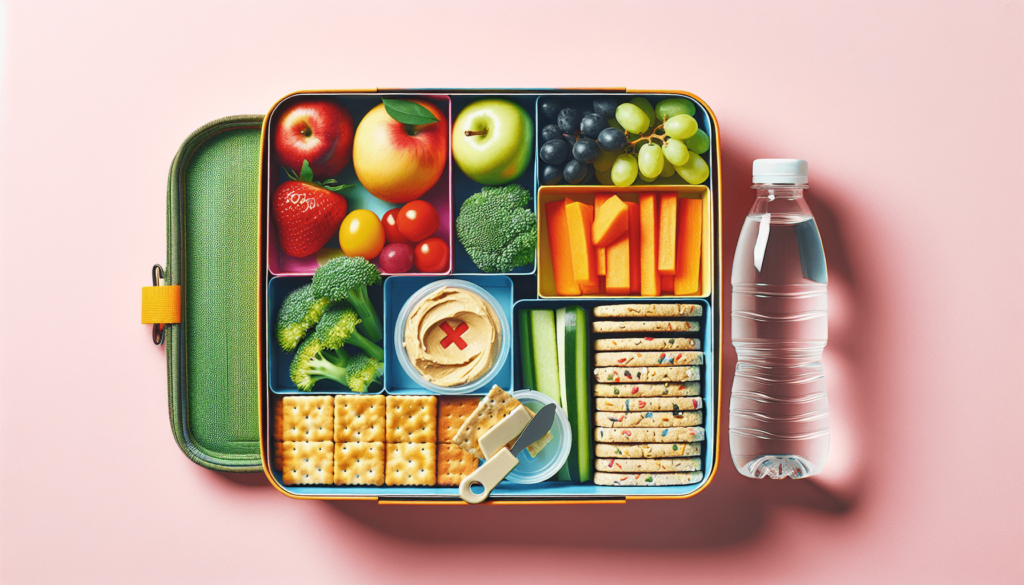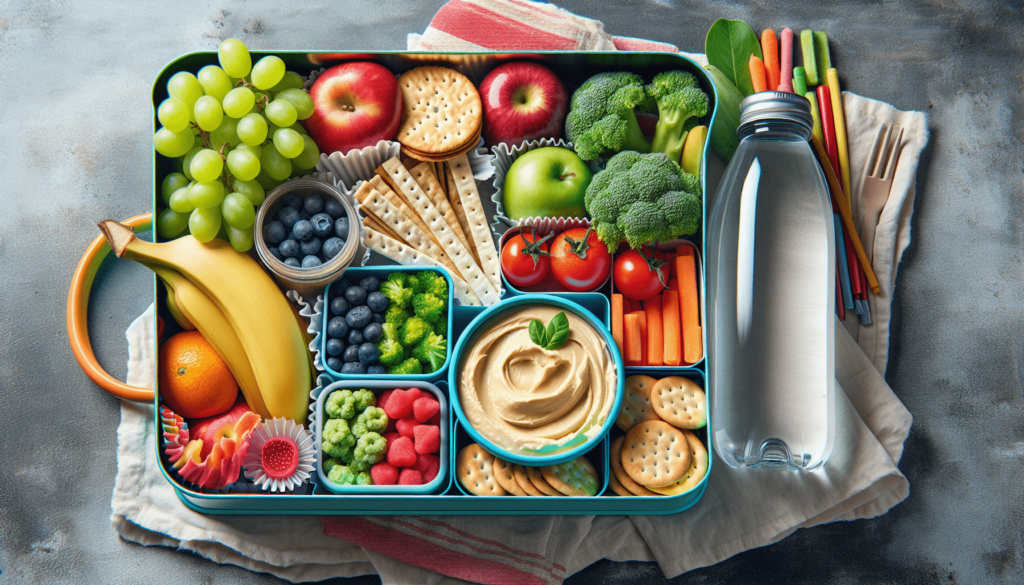Have you ever worried about making sure that the school lunch you pack for your child is safe, delicious, and free from allergens? Navigating food allergies can be challenging, but with the right guidance, you can create nutritious and enjoyable meals without compromising safety.

Understanding Food Allergies
Food allergies occur when your immune system overreacts to a particular protein found in food. These reactions can range from mild to severe and can occur within minutes or hours after consuming the offending food.
Common Food Allergens
Familiarizing yourself with the most common food allergens will help you make better choices. Here are the top eight allergens that account for the majority of reactions:
| Allergen | Examples |
|---|---|
| Milk | Cheese, butter, yogurt, ice cream |
| Eggs | Egg whites, yolks, mayonnaise |
| Peanuts | Peanut butter, peanut oil, various snacks |
| Tree Nuts | Almonds, walnuts, cashews, pecans, hazelnuts |
| Soy | Tofu, soy milk, soy sauce, edamame |
| Wheat | Bread, pasta, cereals, baked goods |
| Fish | Salmon, tuna, cod, haddock |
| Shellfish | Shrimp, crab, lobster, clams, oysters |
Understanding these allergens will assist in reading labels and avoiding cross-contamination.
Preparing Your Kitchen
Ensuring that your kitchen is allergy-safe is the first step to creating safe school lunches. It may require some reorganization and a commitment to detail, but the effort is well worth it.
Clean and Separate
To avoid cross-contamination, make sure you use separate cutting boards, knives, and utensils for allergen-free foods. Cleaning surfaces and utensils thoroughly after each use is also crucial. Here’s a quick guide:
| Task | How-to |
|---|---|
| Washing utensils and boards | Use hot, soapy water and scrub thoroughly |
| Cleaning surfaces | Use a disinfectant wipe or spray and a clean cloth |
| Storing allergen-free foods | Keep them in labeled, airtight containers |
Labeling and Organizing
Ensure that all ingredients are clearly labeled. Create zones within your kitchen for allergen-free foods to minimize the risk of cross-contamination. For instance:
| Kitchen Zone | Purpose |
|---|---|
| Safe Zone | Allergen-free foods preparation |
| Storage Area | Separate shelves or cabinets for specific allergens |
| Labeling Station | Area dedicated to labeling foods and containers |
Planning a Nutritious, Allergy-Safe Lunch
Now that your kitchen is prepared, it’s time to plan meals that are both safe and nutritious. This involves careful selection of ingredients, creativity, and foresight.
Balanced Nutrition
A balanced lunch should include protein, grains, fruits, vegetables, and a source of calcium. Here are some ideas for each food group:
| Food Group | Allergen-Free Options |
|---|---|
| Protein | Chicken, turkey, beans, legumes, quinoa, allergy-safe deli meats |
| Grains | Brown rice, gluten-free bread, quinoa, oatmeal pancakes |
| Fruits | Apples, bananas, strawberries, blueberries, grapes |
| Vegetables | Carrot sticks, cucumber slices, bell peppers, cherry tomatoes |
| Calcium | Fortified plant-based milk (almond, soy, or rice milk), dairy-free yogurt |
Allergy-Safe Recipes
Creating allergy-safe recipes can sound daunting, but with some experimentation, you can find delicious, easy-to-make lunches. Let’s take a look at a sample menu:
| Meal Component | Allergen-Free Recipe |
|---|---|
| Main Dish | Turkey and veggie wrap with gluten-free tortilla |
| Side 1 | Apple slices with sunflower seed butter |
| Side 2 | Baby carrots with hummus |
| Drink | Fortified rice milk |
| Dessert | Dairy-free yogurt with fresh berries |
Tips for Recipe Modification
If a recipe calls for an ingredient your child is allergic to, don’t worry. There are many substitutes available:
| Ingredient | Allergen-Free Substitute |
|---|---|
| Milk | Almond milk, soy milk, oat milk |
| Butter | Coconut oil, margarine (check for allergens) |
| Eggs | Applesauce, flaxseed meal, commercial egg replacer |
| Wheat flour | Rice flour, almond flour, coconut flour |
Remember to always read labels and consult with your child’s healthcare provider before introducing new foods.
Packing the Lunch
Once you’ve planned the menu, the next step is packing the lunch. Proper packing not only keeps food safe but also preserves its quality and taste.
Containers and Packaging
Choose lunch containers that are not only easy to clean but also prevent cross-contamination and keep foods fresh.
| Packaging Material | Benefits |
|---|---|
| BPA-Free Plastic | Lightweight, affordable, and durable |
| Stainless Steel | Durable, easy to clean, and maintains food temperature |
| Silicone | Flexible, non-toxic, and good for portion control |
Keeping Food Safe
Maintaining the proper temperature for school lunches is crucial. Here’s how:
| Issue | Solution |
|---|---|
| Keeping Cool | Use an insulated lunch bag with ice packs |
| Keeping Warm | Use a thermos for soups and hot foods |
| Avoiding Soggy Meals | Pack sauces/dressings separately and use absorbent paper towels |

Communicating With the School
Ensuring that the school staff is aware of your child’s food allergies is vital to their safety.
Informing School Staff
Provide the school staff with detailed information about your child’s allergies. This includes teachers, cafeteria personnel, and anyone involved in meal supervision.
Documentation and Plans
Work with the school to develop an Individualized Healthcare Plan (IHP) or a 504 Plan if your child has severe allergies. These plans detail the protocol for preventing exposure and handling emergencies.
| Plan Component | Details |
|---|---|
| Emergency Contact Information | Phone numbers of parents and healthcare providers |
| Allergy Information | Detailed list of allergens |
| Emergency Medications | List of medications and their locations |
| Action Plan | Steps to take in case of allergic reaction |
Regular Communication
Maintain regular communication with the school staff to ensure they are up-to-date on any changes in your child’s allergy plan.
Educating Your Child
It’s empowering for your child to understand their food allergies and how to stay safe. Education can be tailored to their age and comprehension level.
Age-Appropriate Education
Break down information so that it’s understandable at different ages:
| Age Group | Education Focus |
|---|---|
| Preschool | Basic concepts of safe and unsafe foods |
| Elementary | Reading labels, recognizing symptoms |
| Pre-Teens and Teens | Managing allergies independently, advocating for themselves |
Role-Playing Scenarios
Practicing scenarios where they might encounter allergens can help children feel more confident. For example, practice how to politely decline food that might not be safe or how to ask an adult for help if they feel unwell.
| Scenario | Role-Play Activity |
|---|---|
| Accepting Food | Practice saying, “No, thank you,” when offered food |
| Recognizing Reactions | Discuss and practice what to do if feeling symptoms |
Involving Other Parents
Building a community around your child’s safety can further ease your mind and enhance their well-being.
Educate and Inform
Inform other parents about your child’s food allergies. Sharing resources and having open conversations can build a supportive network.
Group Activities
Organize activities that focus on allergy awareness, such as:
| Activity | Description |
|---|---|
| Allergy Awareness Workshops | Educational sessions about food allergies |
| Potluck Planning | Coordinating potlucks with allergy-safe foods |
Monitoring and Adjusting
An evolving plan is key to successfully managing food allergies. Regularly monitoring and adjusting your strategies can ensure ongoing safety and satisfaction.
Feedback Loop
After each school week, review with your child what went well and what didn’t. This can provide insights into areas of improvement.
| Feedback Question | Purpose |
|---|---|
| What foods did you like? | Identifies preferred safe foods |
| Did you feel safe? | Assesses overall comfort and safety |
Continuous Improvement
Based on the feedback, make the necessary adjustments. Maybe a particular snack wasn’t a hit, or there were issues with the food staying fresh. Learning and improving is part of the process.
Updating the School
Keep the school informed about any changes in your child’s allergy status or management plan.
Conclusion
Creating a food allergy-safe school lunch involves thoughtful preparation and ongoing management. By understanding allergens, organizing your kitchen, planning balanced meals, and maintaining excellent communication, you can ensure your child enjoys safe and nutritious school lunches.
By taking these steps, you’ll be better equipped to manage your child’s food allergies and provide peace of mind while they enjoy their school day. Remember that every child is unique, and staying informed and flexible will aid in successfully navigating food allergies.
